Upholstery is a skill that transforms furniture, giving it new life and a fresh appearance. Beginners in this field need to be familiar with a variety of tools and materials.
This guide provides a comprehensive overview of essential upholstery supplies, aiding beginners in understanding and gathering the necessary items for their projects.
Understanding Upholstery
Before delving into upholstery supplies, it’s crucial to understand what upholstery involves. Upholstery refers to the process of covering furniture with fabric, padding, springs, and webbing.
It’s a traditional craft that combines both functionality and artistry, enabling the transformation of various types of furniture, from sofas and chairs to ottomans and headboards.
Fabric: The Heart of Upholstery
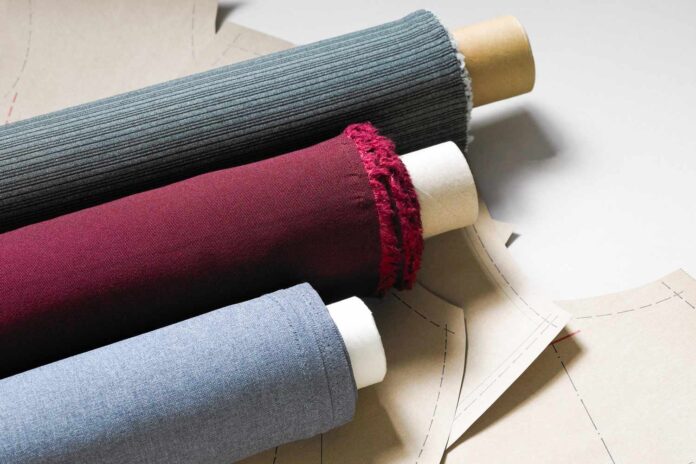
Fabric is the most visible and one of the most important components of upholstery. There’s a vast range of fabrics available, each with its own texture, pattern, and durability.
Beginners should consider factors like wear resistance, ease of cleaning, and suitability for the furniture’s intended use. Popular choices include cotton, leather, velvet, and synthetic blends. While choosing fabric, one must also consider the style and décor of the space where the furniture will be placed.
Foam and Padding: Comfort and Shape
The comfort of upholstered furniture largely depends on its foam and padding. These materials give shape and softness to the furniture. Foam comes in various densities and thicknesses, suited for different types of furniture.
High-density foam is typically used for seating, as it offers durability and comfort. Padding materials like polyester batting or Dacron add an extra layer of softness and can help smooth out the contours of the furniture.
Springs and Webbing: Foundation for Durability

The foundation of any upholstered furniture is its springs and webbing. These components provide support and durability. Springs, such as coil springs, are often used in traditional upholstery and are known for their resilience and comfort.
Webbing, made from materials like jute or synthetic fibers, offers a simpler alternative to springs and is commonly used in modern furniture. Proper installation of springs and webbing is key to ensuring the longevity and comfort of the furniture.
Tools of the Trade
A variety of tools are essential in upholstery. These include:
- Staple Gun and Staples: A staple gun is used to attach fabric and other materials to the furniture frame. It’s essential to choose a durable staple gun and the right size of staples for the task at hand.
- Upholstery Hammer and Tacks: For traditional upholstery, a hammer and tacks are used to secure materials. The hammer is often magnetic, which helps in holding and placing the tacks.
- Scissors and Cutting Tools: High-quality scissors are required for cutting fabric and other materials. Other cutting tools like electric carving knives can be used to shape foam.
- Sewing Supplies: For projects that require sewing, basic sewing supplies like needles, thread, and a sewing machine are necessary.
- Upholstery Needles: These are special needles designed for upholstery work, used for tasks like tying springs and stitching.
Adhesives and Other Supplies
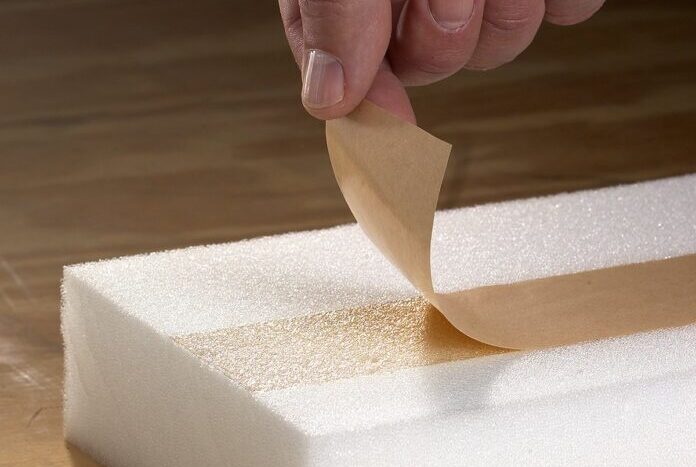
Adhesives play a crucial role in upholstery. They are used to bond materials like foam, fabric, and batting. It’s important to choose the right type of adhesive that offers a strong bond without damaging the materials.
Other supplies like tack strips, piping, and buttons might also be needed, depending on the specific project.
Safety Equipment
Safety should never be overlooked. Upholstery involves tools and materials that can be hazardous. Safety glasses, gloves, and a dust mask are basic safety equipment that should always be used.
Developing Skills and Techniques
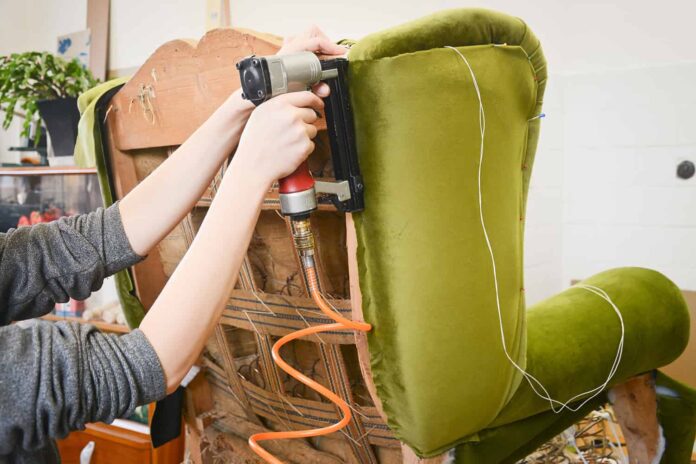
While having the right supplies is crucial, developing upholstery skills and techniques is equally important.
Beginners should start with simple projects and gradually move to more complex ones. There are many resources available, from online tutorials to upholstery classes, which can help in learning the craft.
Practice and Experimentation
As with any craft, practice is essential in upholstery. Beginners should experiment with different fabrics, tools, and techniques to discover what works best for them. Starting with small, less complex projects like upholstering a simple stool or a cushion can provide valuable hands-on experience.
Mistakes are part of the learning process, and each project, whether successful or not, offers insights and lessons.
Selecting the Right Project
Choosing the right project is crucial for beginners. It’s advisable to start with something manageable, both in terms of size and complexity. A small chair or an ottoman can be a good starting point.
These projects are less daunting and require fewer materials, making them ideal for practicing new skills.
Fabric Selection Tips
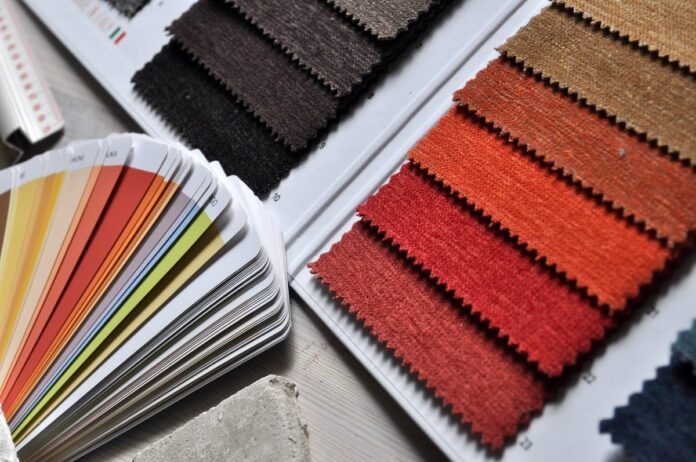
When selecting fabric, there are several factors to consider:
- Durability: Choose a fabric that can withstand the intended use of the furniture. For example, furniture in high-traffic areas will need more durable fabric.
- Color and Pattern: The fabric should complement the room’s décor. Patterns can add character but might be more challenging to align and sew for beginners.
- Care and Maintenance: Consider how easy the fabric is to clean and maintain, especially for furniture that will be used frequently.
Understanding Furniture Anatomy
To successfully upholster a piece of furniture, it’s essential to understand its structure. This includes knowing the different parts like the frame, springs, padding, and how they all come together.
Disassembling a piece of furniture for reupholstery can be a great learning experience, revealing how professional upholsterers construct a piece.
Time Management and Patience
Upholstery can be time-consuming, especially for beginners. It requires patience and attention to detail.
Allocating sufficient time for each project and not rushing through the process is important for achieving a good result. Upholstery is as much about the journey as it is about the finished product.
Building a Workspace
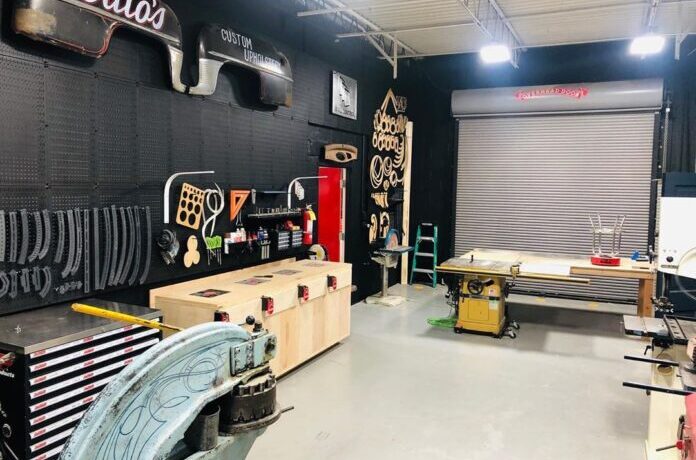
Having a dedicated workspace is beneficial. This space should be well-lit and have enough room to move around the furniture. Organizing tools and materials so they are easily accessible can make the upholstery process more efficient and enjoyable.
Joining a Community
Joining an upholstery community, whether online or in-person, can be extremely beneficial. Interacting with others who share the same interest can provide support, inspiration, and valuable tips.
Many communities also offer workshops and classes, which can be great opportunities for learning and improving skills.
Final Thoughts
Upholstery is a craft that can bring a great sense of accomplishment. It allows for creativity and personal expression while also providing practical skills.
For beginners, the world of upholstery offers endless possibilities. With the right tools, materials, and a willingness to learn and experiment, anyone can transform old, worn-out furniture into beautiful, functional pieces.
As skills improve, so will the complexity and satisfaction of the projects. The journey of becoming an accomplished upholsterer is as rewarding as the stunning pieces of furniture that come to life under your hands.









